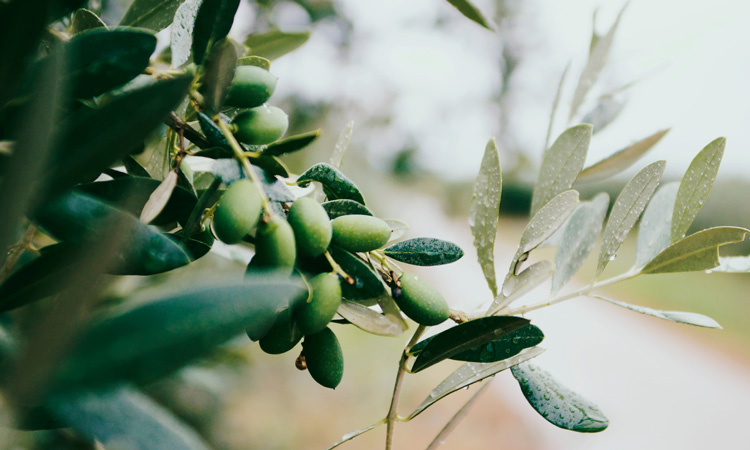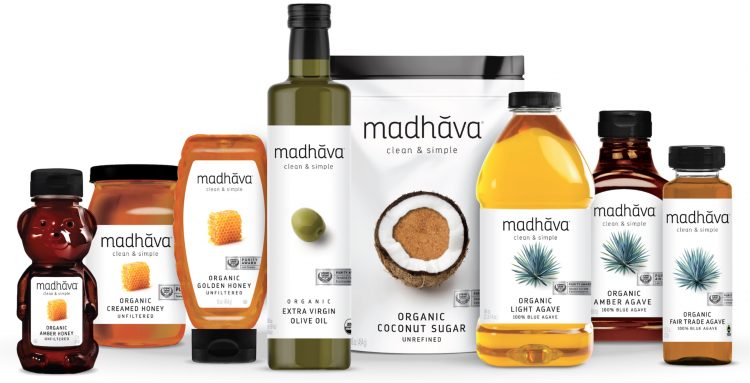Ensuring the quality of honey and olive oil production
- Like
- Digg
- Del
- Tumblr
- VKontakte
- Buffer
- Love This
- Odnoklassniki
- Meneame
- Blogger
- Amazon
- Yahoo Mail
- Gmail
- AOL
- Newsvine
- HackerNews
- Evernote
- MySpace
- Mail.ru
- Viadeo
- Line
- Comments
- Yummly
- SMS
- Viber
- Telegram
- Subscribe
- Skype
- Facebook Messenger
- Kakao
- LiveJournal
- Yammer
- Edgar
- Fintel
- Mix
- Instapaper
- Copy Link
Posted: 21 February 2020 | Colin Sankey | No comments yet
Colin Sankey of Madhava Ltd looks at the exploitation of the olive oil and honey industries and suggests how regulation could be improved to ensure high quality and purity.


Olive oil and honey; two kitchen staples almost everyone has in their pantry. However, it is estimated that more than half of extra virgin olive oil and honey products currently on US retail shelves have been adulterated or are of sub-standard quality.1,2 Many exhibit illegal additives as well as unhealthy levels of contaminants and toxins including heavy metals, antibiotics and pesticides. These are just two categories of hundreds where you will find similar results, meaning that most consumers are not getting what they are paying for – and they are starting to notice.
Thanks to today’s rapidly paced media environment and 24/7 global news coverage, new studies that reveal the dangers hidden within food products are widely shared instantly over social and mainstream media. These studies are sparking new, much-needed conversations among consumers about food safety and quality. As such, they are becoming more aware, more educated and have begun demanding more from their food.
Expectations vs reality
So why is this happening? Why are products from brands and retailers that consumers trust falling short of the quality and purity promises on their labels? Two reasons: food fraud and a shockingly low bar for federal food safety standards.
Large-scale food fraud itself is not new; in fact, it has been around for decades. Most commonly it occurs when a pure product is cut with cheap fillers to increase supply and ultimately the supplier’s profits. For instance, a product labelled and sold as “100 percent Pure Honey” in the United States – the world’s number one consumer of honey – may have significant levels of sugar syrup added.
Food safety and quality standards in the US fall short.
China is one of the largest producers of cheap, inauthentic honey and is where, for decades, some fraudulent suppliers have attempted to flood the US market with inexpensive, adulterated product. This has had a profoundly negative impact on local US honey suppliers. In 2001, in an effort to curb the problem, the US Government placed a large tariff on honey originating from China, nearly tripling its price.3 However, fraudulent Chinese suppliers began rerouting their adulterated product through other countries outside of the US restrictions, and used forged documents that faked the country of origin, thereby circumventing the US tariffs on China.
As a result, in order to preserve the quality and purity of honey in the US, third-party laboratories were commissioned by some buyers to test incoming honey for its authenticity. Isotope testing is now used to identify specific botanicals pollinated by honey bees revealing the country of origin and authenticity. This kind of testing, while effective, is not the industry standard, neither is it required by federal law; consequently – and too often – diluted product still makes it onto US retailers’ shelves.


Suppliers and buyers must work hand-in-hand to ensure quality is maintained every day
In 2008 the largest food fraud case in US history occurred when one of the largest importers of honey, ALW Food Group, knowingly attempted to import millions of pounds of adulterated honey from China rerouted through Russia laced with an illegal antibiotic called chloramphenicol.4 The attempt was thwarted and the fraudulent honey seized when the US Government raided the offices of ALW Food Group. This particular case resulted in the formation of organisations like True Source Honey – an initiative aiming to shed light on the problem of illegally sourced honey and encourage action to protect consumers and customers from these practices.
Thanks to today’s rapidly paced media environment and 24/7 global news coverage, new studies that reveal the dangers hidden within food products are widely shared instantly over social and mainstream media.
In the olive oil sector, a similar organisation exists called The International Olive Council, which creates standards to combat poor grade extra virgin olive oil and other oils that can also be cut with cheap fillers.
However, such efforts are not sufficient to ensure the authenticity of our food products. Even authentically made, sourced and produced goods are at risk of exposure to unsafe, environmental contaminants and pollutants.
Consuming contaminants and toxins can pose serious health risks to consumers, especially children and babies. Food safety and quality standards in the US fall short of protecting us from unhealthy levels of adulterants such as heavy metals, antibiotics and pesticides.
The United States Department of Agriculture Food Safety and Inspection Service (USDA) restrictions5 ban antibiotics from finished meat and poultry product, but lack of screening and accountability leads to unhealthy levels of antibiotics in large numbers of end products across the US. The United States Environmental Protection Agency (EPA) regulates the maximum amount of a pesticide allowed to remain in or on a finished food product, but ongoing independent third-party testing shows dangerous levels are found in thousands of products on retail store shelves right now – including many baby food brands.
Unsafe heavy metals are hardly regulated today, with the exception of the baby food sector. Arsenic, lead and mercury can occur naturally in the soil where many food products are grown. Contaminated air, water and soil from pollution in these locations adds to levels of dangerous metals. Farmed plants and trees absorb these toxins as they search for nutrients in the ground and eventually, if unscreened, find their way into various finished food products.
The truth is, there is a significant difference between court of law and court of public opinion when it comes to what are acceptable levels of contaminants and toxins in our food. Combine this with rampant global food fraud and the result is a US marketplace flooded with sub-standard products donning fancy labels that promise quality but fall drastically short.


Honey should be pure honey and extra virgin olive oil should be genuinely extra virgin
Raising the bar
So how do we take a stand against food fraud and raise the level or quality and purity in our industry? It is all about picking the right partners and going the extra mile to test your product – at its source, at every stage of transport and just before it hits retail shelves – again and again.
Qualifying the right suppliers is more than just selecting a name from a list. The relationship between supplier and buyer is a global collaboration. You must work together to ensure quality is maintained every day – from source to shelf.
Purity and authenticity should be the industry standard.
At Madhava, quality, purity and authenticity are our highest priorities. We constantly monitor and measure each product supply chain with continuous testing to ensure best-in-class purity and embrace continuous improvement. Every Madhava product is also tested by a third party – Clean Label Project – before it ever reaches the consumer; these tests are based on three basic categories: purity, superiority and authenticity.
For purity, each product is tested in an independent chemical lab for hundreds of harmful environmental and industrial contaminants and toxins. To measure our products’ superiority level, each is tested for its nutritional attributes such as levels of antioxidants, minerals and vitamins. Finally, authenticity testing ensures our products meet requirements for its standard of identity.
Clean Label Project uses the consumer chain of custody sampling and testing. Rather than simply relying on manufacturer supplied certificates of analysis, the organisation simulates the consumer shopping experience. They go into local coops, national retailers and brand websites and purchase products, just as a consumer would. The only difference is that it submits the samples to one of its partner laboratories for testing and benchmarking.
Purity and authenticity should be the industry standard. This is what consumers deserve, expect and pay for; but right now, consumers are waking up and their trust and faith in the marketplace is eroding. In the absence of significant or effective government regulation, it is time for retailers and brands alike to take a stand against food fraud and raise the bar when it comes to quality and purity.
References
1. Tests Show Most Store Honey Isn’t Honey | Food Safety News [Internet]. Food Safety News. 2020 [cited 14 January 2020]. Available from: https://www.foodsafetynews.com/…
2. Bring It On: Olive Oil Importers Welcome More Testing by FDA [Internet]. Olive Oil Times. 2020 [cited 14 January 2020]. Available from: https://www.oliveoiltimes.com/…
3. Food Detectives on a Tough Case [Internet]. Nytimes.com. 2020 [cited 14 January 2020]. Available from: https://www.nytimes.com/2015/01/20/…
4. Bloomberg [Internet]. Bloomberg.com. 2020 [cited 14 January 2020]. Available from: https://www.bloomberg.com/news/…
5. FSIS – USDA [Internet]. Fsis.usda.gov. 2020 [cited 14 January 2020]. Available from: https://www.fsis.usda.gov/wps/wcm…
About the author
Colin Sankey is a food industry veteran, building household brands with multinational food companies and natural/specialty entrepreneurs including Nestlé, PowerBar and IZZE Sparkling Juice. He currently leads the mission at Madhava Ltd. to raise the standard on what should be expected from food and beverage brands and provide the quality expected by today’s conscious consumers.
Issue
Related topics
Fats & oils, Quality analysis & quality control (QA/QC), Regulation & Legislation, Supply chain









